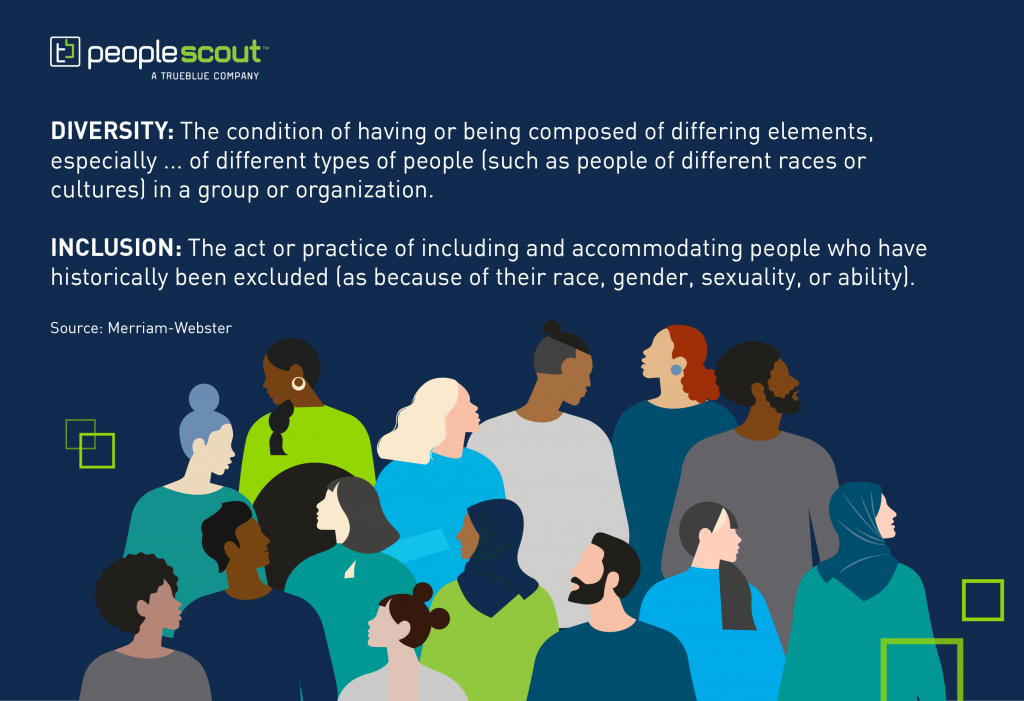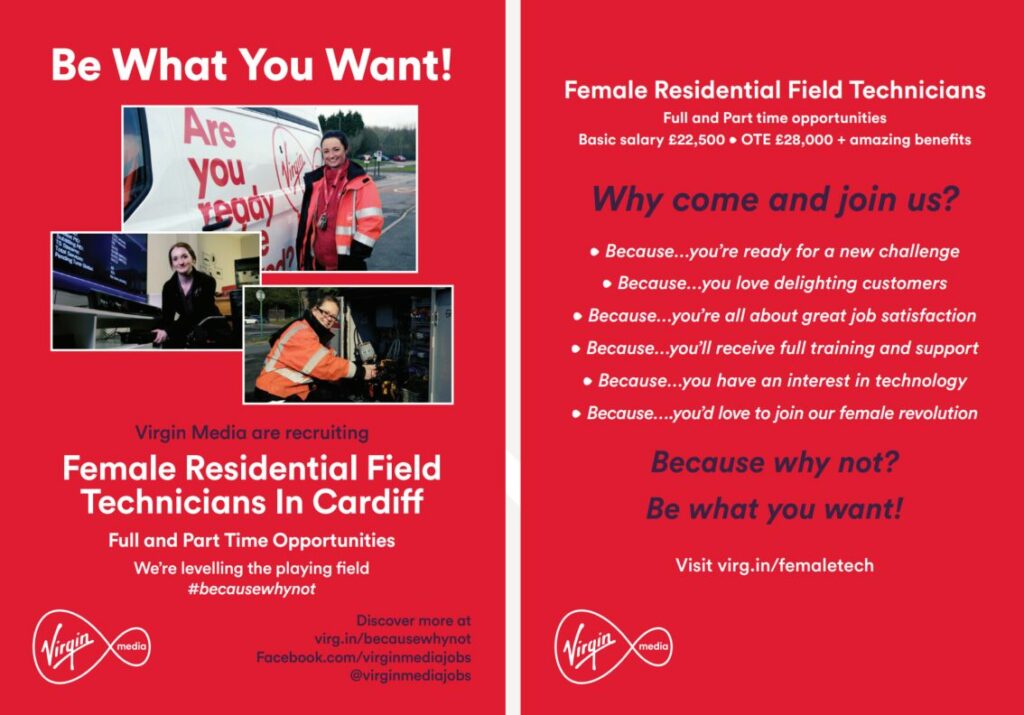The seemingly never-ending obstacle course of 2020 has been filled with highs, lows and everything in between — from a landmark ruling for LGBTQ+ workers to an international awakening to systemic racism and a global pandemic that has impacted the lives of millions. As organizations around the world face a future more unpredictable than ever before, one thing remains certain: the business case for diversity and inclusion (D&I) is stronger than ever.
In order to face unique challenges, organizations will need unique thinking, the kind that only comes with a truly diverse team — whether in age, gender, sexuality, race or otherwise. According to a report from the World Economic Forum, companies with above-average diversity scores report nearly 20% higher revenue due to innovation. Moreover, this article from The Conversation cites research from more than 300 Australian studies that conclusively shows how workplace racism has a direct, detrimental impact on performance, accounting for an estimated 3% loss in average annual gross domestic product.
That said, the driving motivators for organizations to foster effective D&I programs should not be focused only on performance metrics, but rather the desire to make employees feel represented, understood, respected and cared for. While most companies are able to increase their level of diversity, they struggle with cultivating a culture in which those diverse voices are heard — leaving room for improvement in their inclusion efforts.
D&I: Defined
Diversity and inclusion in the workplace has been a hot topic for years, so why does it often seem like minimal meaningful change has occurred? Unfortunately, the downfall for many organizations is the misinterpretation that diversity and inclusion are synonymous. To avoid making this mistake, it is important to understand the difference between diversity and inclusion, to better understand why it’s time to shift focus to the latter.

The definition for diversity is relatively straightforward, and simple enough for most organizations to achieve by tracking demographics and collecting concrete data to ensure they hire and promote people of varying backgrounds.
However, the definition for inclusion is more difficult to effectively measure results against because every organization can interpret words like “including” and “accommodating” differently.
According to Deloitte, “without a shared understanding of inclusion, people are prone to miscommunication, progress cannot be reliably evaluated, leaders can’t be held accountable and organizations default to counting diversity numbers.”
Deloitte goes a step further by using its research to create a holistic definition comprised of four distinct yet connected elements:
- Fairness and respect: The starting point for effective inclusion is ensuring people are treated equitably and with respect — in both nondiscrimination and basic courtesy.
- Valued and belonging: People will feel included when they believe their authentic self is valued by others and they feel a sense of connectedness with their peers.
- Safe and open: Inclusion is experienced when people feel safe to speak up without any fear of embarrassment or retaliation.
- Empowered and growing: True inclusion happens when people feel empowered to grow in their role and do their best work — diversity of thinking can emerge.
By looking at the depth of these definitions, it’s clear that building and maintaining an effective inclusion program requires considerably more time and effort than it does to reformat a hiring process to increase diversity. While diversity can be measured and those metrics can be used to set and achieve goals, inclusion calls for a continuous cultural reset.
Inclusion Requires Action
In a 2020 report by McKinsey & Company, data from three industries with the highest levels of executive-team diversity — financial services, technology and healthcare — showed that “while overall [employee] sentiment on diversity was 52% positive and 31% negative, sentiment on inclusion was markedly worse, at only 29% positive and 61% negative.” Furthermore, the levels of negative sentiment about equality and fairness of opportunity, key indicators of inclusion, were also particularly high — proving that even more diverse companies struggle with effective inclusion.
So, what are some steps organizations can take toward fostering better inclusion? To gain some insight, LinkedIn asked Black talent leaders their thoughts on what talent acquisition teams can do to accelerate diversity and inclusion. Here are three of their tactics:
Change how and where you look for talent
This starts with having diverse recruiting teams. Having recruiters from a wide variety of backgrounds will help employers change the way they think about how and where they find talent — shifting their sourcing beyond the geographies, companies and schools they’ve become accustomed to.
Make a “top-down investment” in diverse employees
To build diversity into the succession plan, organizations should invest time, money, training and executive sponsorship into their diversity efforts, ensuring representation across the business. By hiring and promoting diverse talent, an organization sends a message of inclusion that ripples throughout the company and into the industry — positioning you as an inclusive workplace that recognizes the value of diverse talent.
Leverage the power of remote work
Continuing distributed work strategies beyond the current crisis will allow recruiting teams to source, engage and hire talent where they are. Organizations will no longer be limited to talent that lives in the same geographies as their physical offices, meaning they can expand their scope to locations that are historically diverse.
These tactics may seem like large feats, and that’s because they are. Building an organization that is truly diverse and inclusive is a huge undertaking that takes time, effort and serious commitment. While you work on the organizational overhaul, keep in mind that there are also some smaller steps you can take along the way:
- Provide resources. Inclusion can’t be mandated; it requires the “changing of hearts and minds.” Organizations can do their part by encouraging open dialogue and providing educational resources, like this anti-racist reading list from DiversityInc.
- Break up cliques. We are naturally drawn toward others who are like us, which can often result in cliques. Create opportunities to position employees outside of their comfort zone and into work groups made up of people with various backgrounds.
- Form inclusive groups. Create a dedicated task force focused on updating policies that promote your company’s values. Project Include offers more suggestions for creating systemic inclusion here.
- Offer professional development. Offering development programs and mentorship opportunities to underrepresented employees who may have a steeper hill to climb can help them in their career ascent.
- Showcase diverse talent. Representation matters, and employees and candidates will understand how you value diverse talent when you celebrate and share their stories.
A Continuous Journey
It can be easy to get lost in the mindset that inclusion is a “one and done” activity. That mindset has a certain allure, because it would mean we could all rest assured knowing we’ve created a workforce that is 100% diverse and effectively inclusive. In reality, inclusion is a continuous journey that requires a concerted effort, focus and determination to effect meaningful change. You can think of it like a long road trip — one that requires multiple checkpoints, refuels and stops to check you’re still going in the right direction. To ensure you’re always on the correct path, it can be helpful to perform a regular inclusion audit that asks:
- Does the organization have a continuous representation of diverse talent?
- Is diverse talent represented in leadership roles?
- Is there room to remove bias in the hiring process? Promotion process?
- Are we listening to employee concerns?
- Are we regularly surveying employee sentiment on D&I?
- Do we know what’s working? What isn’t?
- Have we asked employees what they want and need?
It’s clear that simply hiring diverse talent is not enough. While it’s a start, it’s only part of the solution. Workplace experience and true inclusion is what will help employees feel represented and valued, leading to diverse hires that stay, grow and thrive. The road ahead is a long one, but by implementing the strategies outlined in this article, your organization will be well on its way toward a better diverse and inclusive workplace.







